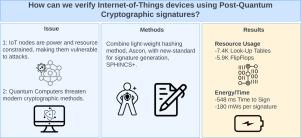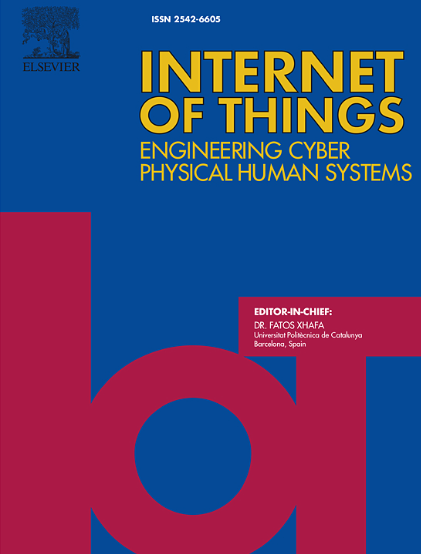利用 Ascon-Sign 保障物联网安全
IF 6
3区 计算机科学
Q1 COMPUTER SCIENCE, INFORMATION SYSTEMS
引用次数: 0
摘要
据估计,与加密相关的量子计算机(CRQC)将在未来 15 年内问世,因此开发后量子安全技术势在必行。以前安全的网络可能很快就会成为这些 CRQC 的牺牲品,因为它们很可能会攻击网络中最薄弱的环节。在现代网络中,这些薄弱环节通常以物联网(IoT)设备的形式存在,因为这些无线节点施加的资源限制导致安全性降低。我们首次为资源受限的 FPGA 实现了 Ascon-Sign,使无线传感器网络能够验证节点。我们的设计运行速度是类似区域受限器件的两倍,每次运行功耗降低了 33%。我们将我们的设计与用于天气检测的无线传感器网络相集成,从而展示了我们的设计能力。我们还对 Ascon-Sign 规范提出了修改建议,从而缩短了处理时间,降低了内存要求。本文章由计算机程序翻译,如有差异,请以英文原文为准。

Securing the Internet of Things with Ascon-Sign
With a Cryptographically-Relevant Quantum Computer (CRQC) estimated to be viable within the next 15 years, the development of post-quantum security is imperative. Previously secure networks may soon fall victim to these CRQCs as they will likely attack the weakest link in a network. In modern networks, these weak-links are often present in the form of Internet of Things (IoT) devices, as the resource constrains imposed by these wireless nodes leads to lowered security. We offer the first Ascon-Sign implementation for resource constrained FPGAs, which allows a wireless sensor network to verify nodes. Our design runs twice as fast as similarly-area constrained devices, and shows a 33% reduction in power per operation. We demonstrate the capability of our design by integrating it with a wireless sensor network for weather detecting. We also propose an amendment to the Ascon-Sign specification that allows for shortened processing time and lower memory requirements.
求助全文
通过发布文献求助,成功后即可免费获取论文全文。
去求助
来源期刊

Internet of Things
Multiple-
CiteScore
3.60
自引率
5.10%
发文量
115
审稿时长
37 days
期刊介绍:
Internet of Things; Engineering Cyber Physical Human Systems is a comprehensive journal encouraging cross collaboration between researchers, engineers and practitioners in the field of IoT & Cyber Physical Human Systems. The journal offers a unique platform to exchange scientific information on the entire breadth of technology, science, and societal applications of the IoT.
The journal will place a high priority on timely publication, and provide a home for high quality.
Furthermore, IOT is interested in publishing topical Special Issues on any aspect of IOT.
 求助内容:
求助内容: 应助结果提醒方式:
应助结果提醒方式:


